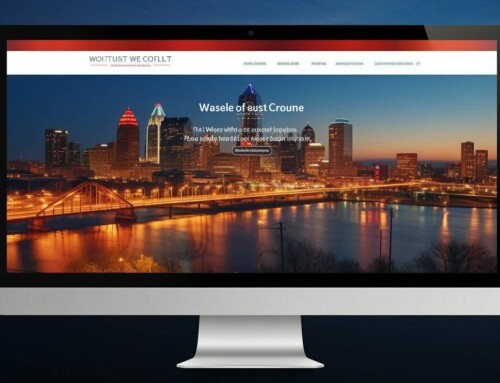A well-designed website is vital for business success. However, web design can be considered an art form as much as it is the foundation of your brand image. You’ll want to get the “formula” of intuitive design and seamless user experience right in order to see results. Here are 9 important steps to take when creating your business website.
Step 1 – Collaborate with a web developer
When running a business, you’ll often have a lot on your plate. Outsourcing a web developer can provide you the tools to create a stunning website. Pick one that knows what it’s doing and can meet your specific goals. On the hunt for a Kansas City web developer? Don’t hesitate to give us a shout!
Step 2 – Choose a catchy name
What’s in a website name? Specifically, a reflection of your brand and its identity as a whole. Choose a name people will remember without having to blink twice. You can simply use your company name or come up with something a little more creative.
Step 3 – Align your website design with your goals
Outline your goals and key performance indicators. What do you want your website to achieve? Is it a greater volume of sales? To build brand awareness? If you’re selling a particular product, make sure that elements of your website reflect this thematically. Whatever the case, make sure your landing page provides visitors with complete and concise information regarding what your business is all about.
Step 4 – Pick a theme that reflects your personality
Setting the scene visually is key to letting your visitors know who you are. If your brand aims to present itself as professional, you may be better off incorporating muted colors, a sleek design, and strong sans serif fonts. If you want to be received as playful, you may choose to incorporate brighter colors and a more playful layout.
Step 5 – Set achievable goals
The key to success is creating achievable monthly goals and setting realistic expectations. Tailor your design towards how your visitors are responding to your website—are they frequently abandoning their carts or clicking through to your chat line? Switch up your content every now and then to keep customers interested.
Step 6 – Take advantage of social media channels
In this day and age, it’s rarer to discover a company without social media presence. Take advantage of your Facebook, Instagram, and Twitter accounts to share information and provide various forms of customer service. Cross-post shareable content and use this to lead users back to your website.
Step 7 – Fill your website with unique and valuable content
When building your website, you’re going to want to use your static content to answer as many common inquiries as your visitors might have. If you have a lot of information to share, consider incorporating a blog into your website. Blog entries can achieve a great deal of traffic, especially if your visitors are sharing them with others.
Step 8 – Make your site interactive
When it comes to making an online sale, keeping visitors on your site for as long as possible is important. Incorporating interactive elements to your site is a great way to keep them occupied and entice them to click through to product or service pages.
Step 9 – Don’t neglect your analytics tools
Translating analytics can get complicated, but doing so will allow you to reflect on where your visitors are coming from and which parts of your website you might have to improve. Using analytics to make constant adjustments keeps your content relevant and meaningful.
Conclusion
A lot goes into building a dynamic and engaging website. At Fox Web Creations, we prioritize your vision by helping you achieve your goals visually and with the right tools.
If you’re on the fence about your next Kansas City web designer, don’t be! We’ll get that intelligent design up in no time.















